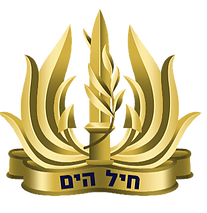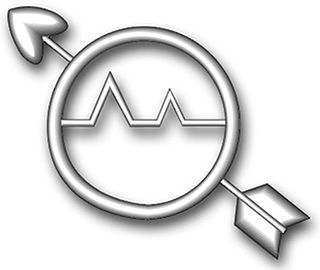
Signals intelligence (SIGINT) is the act and field of intelligence-gathering by interception of signals, whether communications between people or from electronic signals not directly used in communication. Signals intelligence is a subset of intelligence collection management. As classified and sensitive information is usually encrypted, signals intelligence may necessarily involve cryptanalysis. Traffic analysis—the study of who is signaling to whom and in what quantity—is also used to integrate information, and it may complement cryptanalysis.

Ultra was the designation adopted by British military intelligence in June 1941 for wartime signals intelligence obtained by breaking high-level encrypted enemy radio and teleprinter communications at the Government Code and Cypher School (GC&CS) at Bletchley Park. Ultra eventually became the standard designation among the western Allies for all such intelligence. The name arose because the intelligence obtained was considered more important than that designated by the highest British security classification then used and so was regarded as being Ultra Secret. Several other cryptonyms had been used for such intelligence.
Magic was an Allied cryptanalysis project during World War II. It involved the United States Army's Signals Intelligence Service (SIS) and the United States Navy's Communication Special Unit.

Room 40, also known as 40 O.B., was the cryptanalysis section of the British Admiralty during the First World War.

Quartermaster is a military term, the meaning of which depends on the country and service. In land armies, a quartermaster is generally a relatively senior soldier who supervises stores or barracks and distributes supplies and provisions. In many navies, a quartermaster is an officer with particular responsibility for steering and signals. The seaman is a non-commissioned officer rank; in some others, it is not a rank but a role related to navigation.
OP-20-G or "Office of Chief Of Naval Operations (OPNAV), 20th Division of the Office of Naval Communications, G Section / Communications Security", was the U.S. Navy's signals intelligence and cryptanalysis group during World War II. Its mission was to intercept, decrypt, and analyze naval communications from Japanese, German, and Italian navies. In addition OP-20-G also copied diplomatic messages of many foreign governments. The majority of the section's effort was directed towards Japan and included breaking the early Japanese "Blue" book fleet code. This was made possible by intercept and High Frequency Direction Finder (HFDF) sites in the Pacific, Atlantic, and continental U.S., as well as a Japanese telegraphic code school for radio operators in Washington, D.C.

The Israeli Navy is the naval warfare service arm of the Israel Defense Forces, operating primarily in the Mediterranean Sea theater as well as the Gulf of Eilat and the Red Sea theater. The current commander in chief of the Israeli Navy is Aluf David Saar Salama. The Israeli Navy is believed to be responsible for maintaining Israel's offshore nuclear second strike capability.
A second mate or second officer (2/O) is a licensed member of the deck department of a merchant ship holding a Second Mates Certificate of Competence, by an authorised governing state of the International Maritime Organization (IMO). The second mate is the third in command and a watchkeeping officer, customarily the ship's navigator. Other duties vary, but the second mate is often the medical officer and in charge of maintaining distress signaling equipment. On oil tankers, the second mate usually assists the chief mate with the cargo operations.

Watchkeeping or watchstanding is the assignment of sailors to specific roles on a ship to operate it continuously. These assignments, also known at sea as watches, are constantly active as they are considered essential to the safe operation of the vessel and also allow the ship to respond to emergencies and other situations quickly. These watches are divided into work periods to ensure that the roles are always occupied at all times, while those members of the crew who are assigned to work during a watch are known as watchkeepers.

HMAS Harman is a Royal Australian Navy (RAN) base that serves as a communications and logistics facility. The main base is located in the Australian capital of Canberra, and is geographically recognised as the suburb of Harman in the District of Jerrabomberra. Established in the late 1930s as the Royal Australian Navy Wireless/Transmitting Station Canberra, the facility was commissioned into the RAN as a stone frigate in 1943. In addition to its communications and logistics roles, the base hosts reserve units from both the Australian Army Reserves and Royal Australian Air Force Reserves, as well as cadet units from all three branches of the Australian Defence Force Cadets.
The B-Dienst, also called xB-Dienst, X-B-Dienst and χB-Dienst, was a Department of the German Naval Intelligence Service of the OKM, that dealt with the interception and recording, decoding and analysis of the enemy, in particular British radio communications before and during World War II. B-Dienst worked on cryptanalysis and deciphering (decrypting) of enemy and neutral states' message traffic and security control of Kriegsmarine key processes and machinery.
Station HYPO, also known as Fleet Radio Unit Pacific (FRUPAC), was the United States Navy signals monitoring and cryptographic intelligence unit in Hawaii during World War II. It was one of two major Allied signals intelligence units, called Fleet Radio Units in the Pacific theaters, along with FRUMEL in Melbourne, Australia. The station took its initial name from the phonetic code at the time for "H" for Heʻeia, Hawaii radio tower. The precise importance and role of HYPO in penetrating the Japanese naval codes has been the subject of considerable controversy, reflecting internal tensions amongst US Navy cryptographic stations.

Radioman (RM) was a rating for United States Navy and United States Coast Guard enlisted personnel, specializing in communications technology.

Operations Specialist is a United States Navy and United States Coast Guard occupational rating. It is a sea duty-intensive rating in the Navy while most of Coast Guard OS's are at ashore Command Centers.
A command duty officer or officer of the watch is the head duty officer on a ship, entrusted by the commanding officer and executive officer or the shipmaster with exercising in their absence command and control of the ship on their behalf for the duration of a watch.
Before the development of radar and other electronics techniques, signals intelligence (SIGINT) and communications intelligence (COMINT) were essentially synonymous. Sir Francis Walsingham ran a postal interception bureau with some cryptanalytic capability during the reign of Elizabeth I, but the technology was only slightly less advanced than men with shotguns, during World War I, who jammed pigeon post communications and intercepted the messages carried.
The officer corps of the Royal Navy is the cadre of personnel holding a commission from the sovereign appointing them in a position of authority in the Royal Navy.
The German Naval Intelligence Service was the naval intelligence department of the Germany Navy and had a long history, going back to the naval aspirations of German emperor Wilhelm II in 1899.
In 1989 the Royal Navy was under the direction of the Navy Department in the UK Ministry of Defence. It had two main commands, CINCFLEET and Naval Home Command.

Ludwig Stummel was a German career signals officer with the rank of Konteradmiral, who had a glass eye and a limp and who was in effect, the Chief of Staff of the Naval Warfare department, Naval Communications (4/SKL) of the Kriegsmarine. Stummel was most notable for being the person responsible for the cryptographical security of the Enigma cipher machine and Key M infrastructure security, during World War II. Stummel was replaced at the Kriegsmarine Naval War Command on the 16–17 August 1944 by Fritz Krauss, after becoming ill. Stummel was a fervent Catholic. His faith gave him a moral compass during the latter years of the war. Initially a supporter of Nazis, he became doubtful as the war progressed. He was released from the Kriegsmarine in February 1945.










